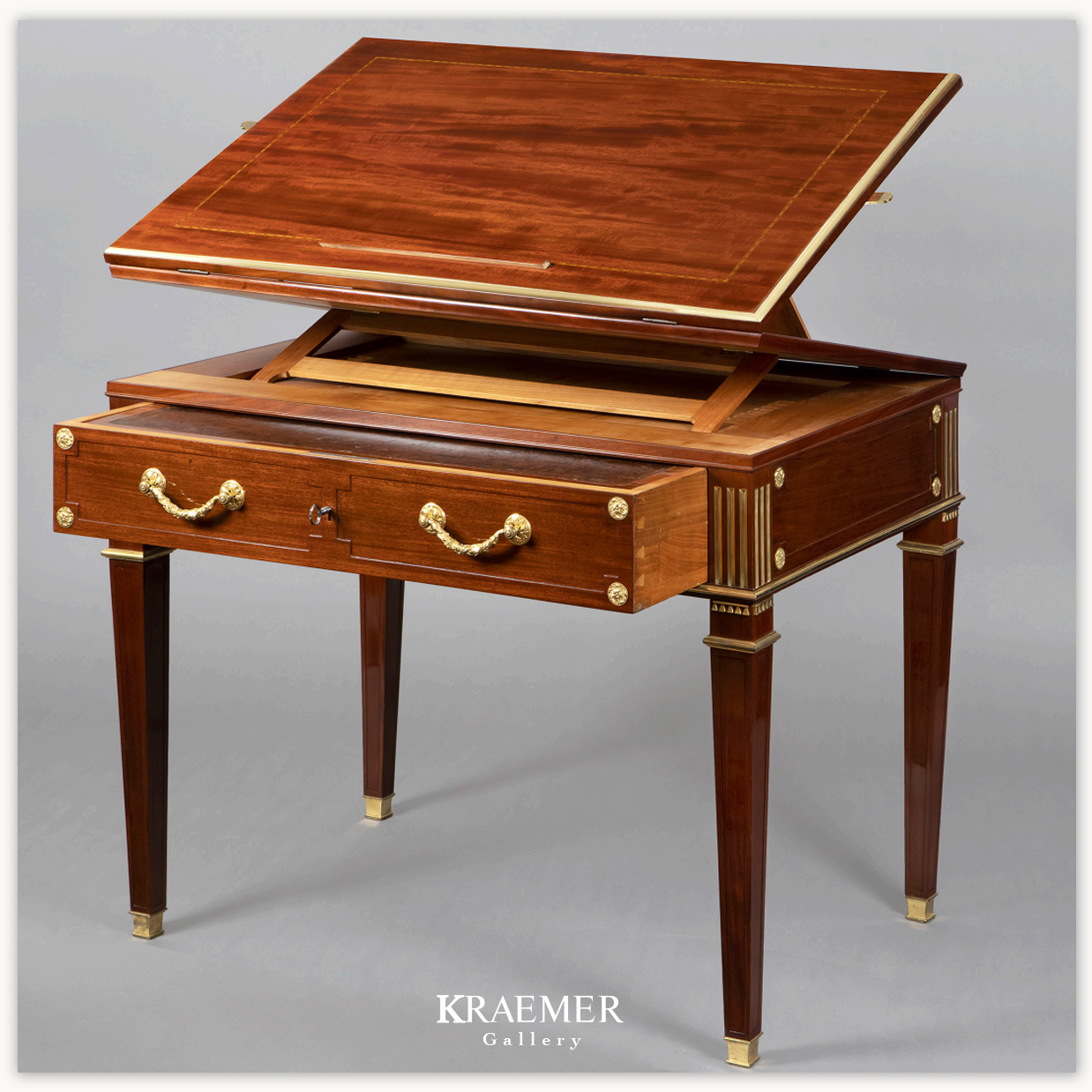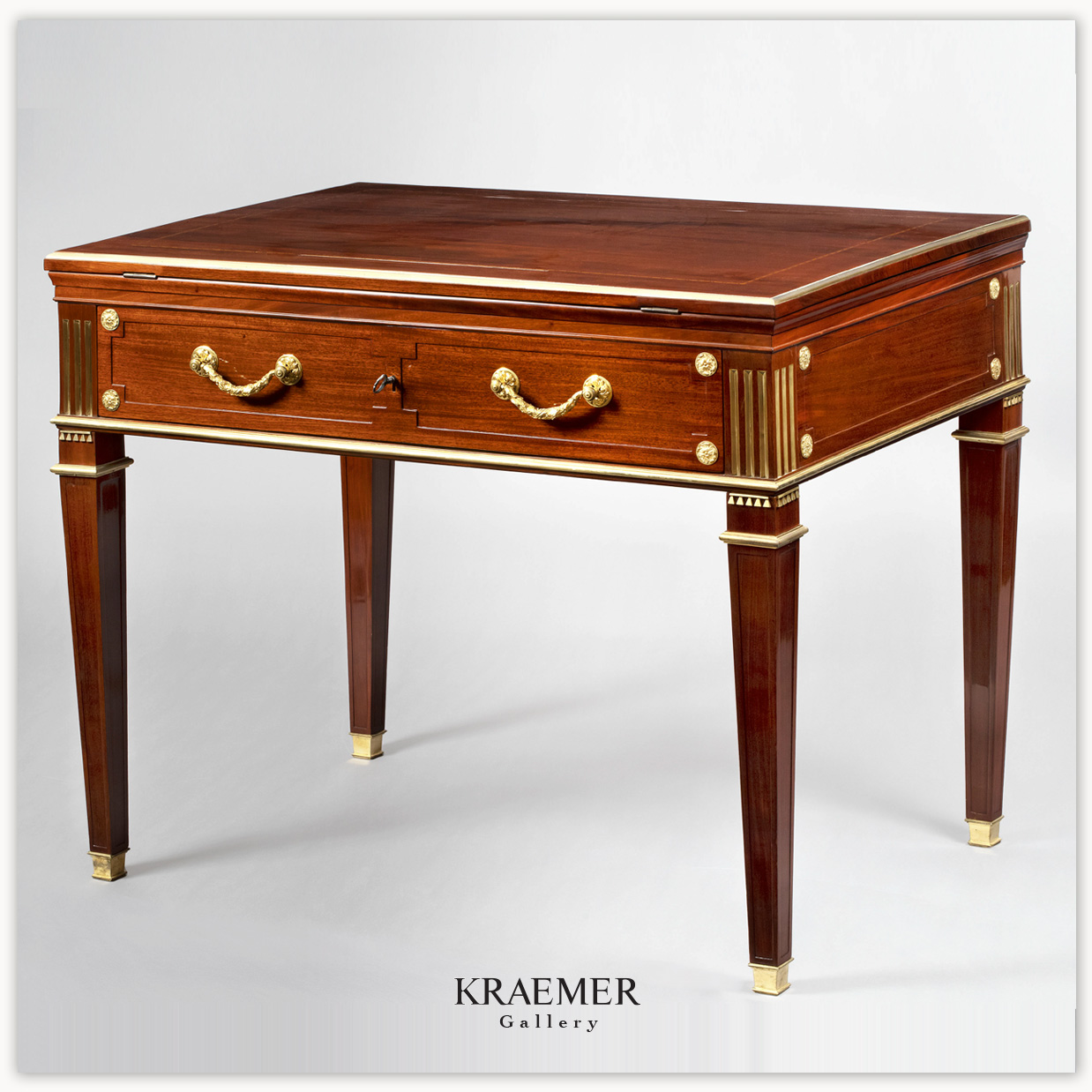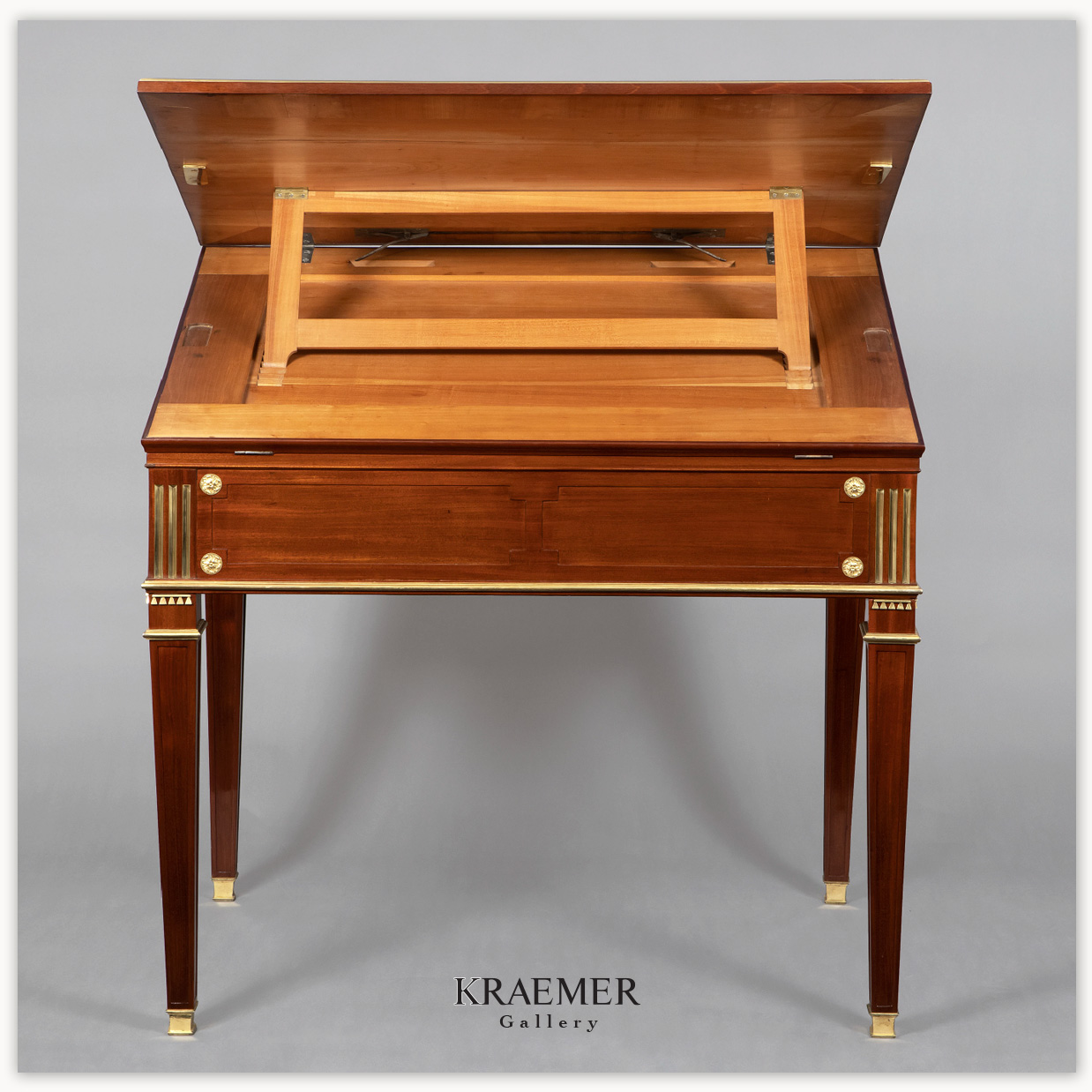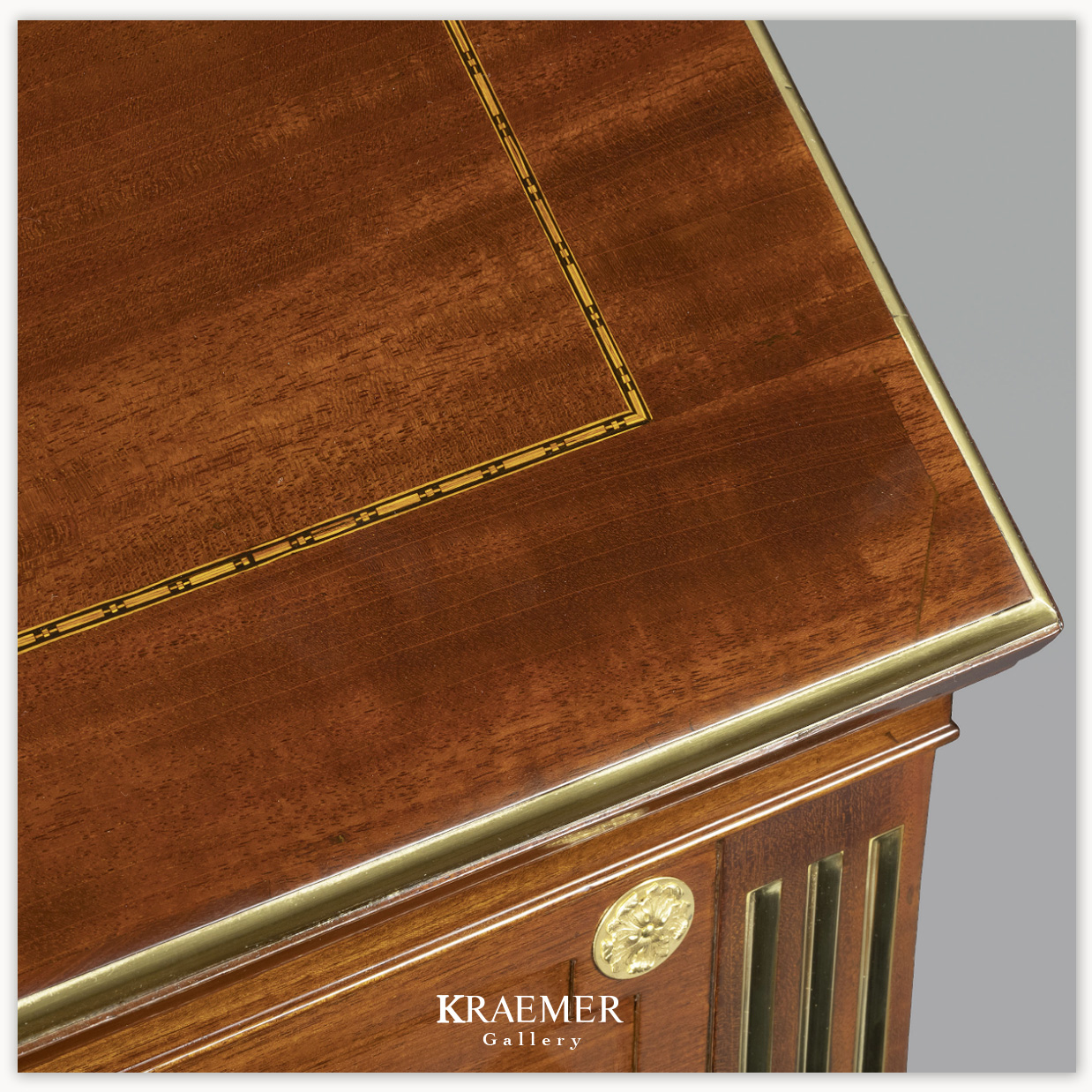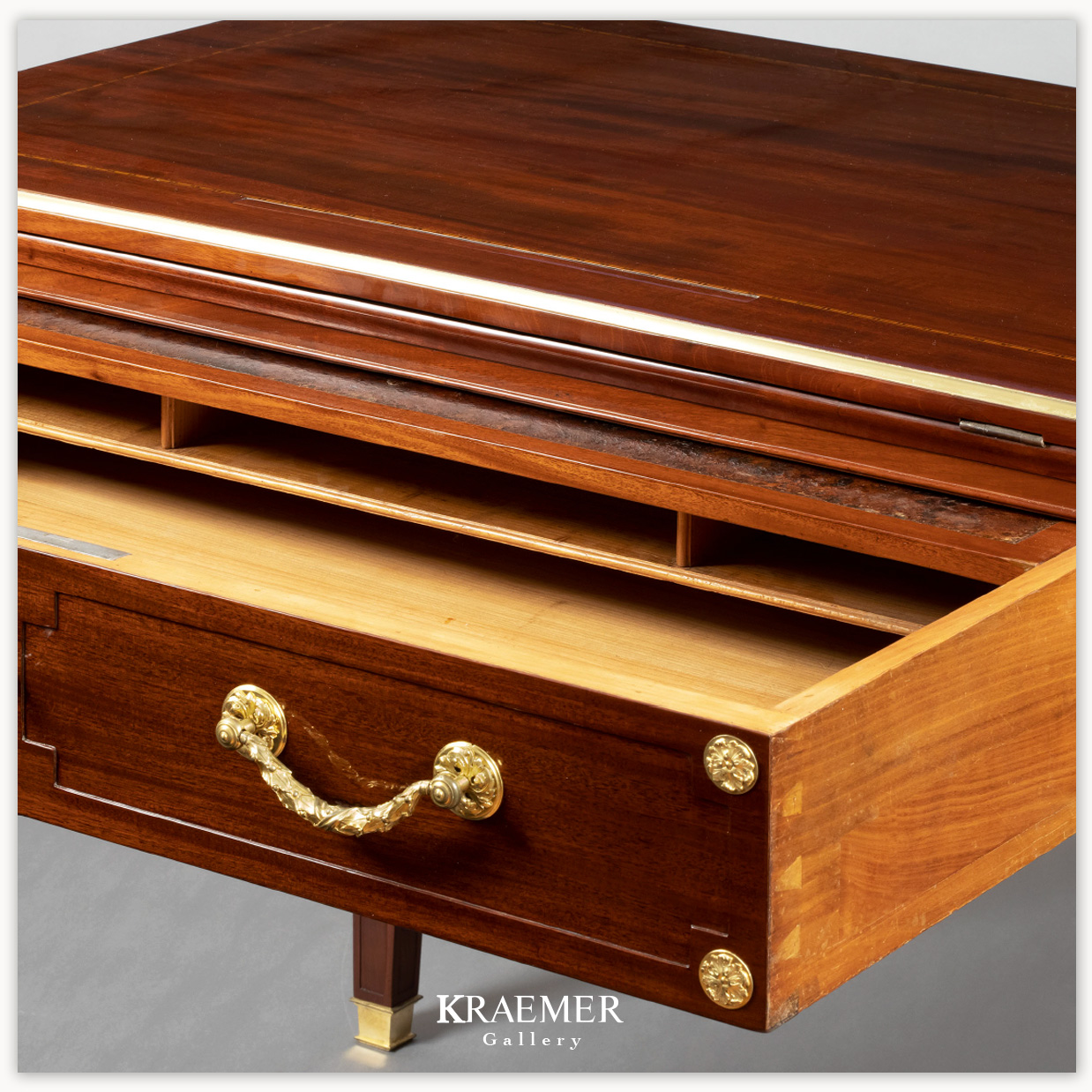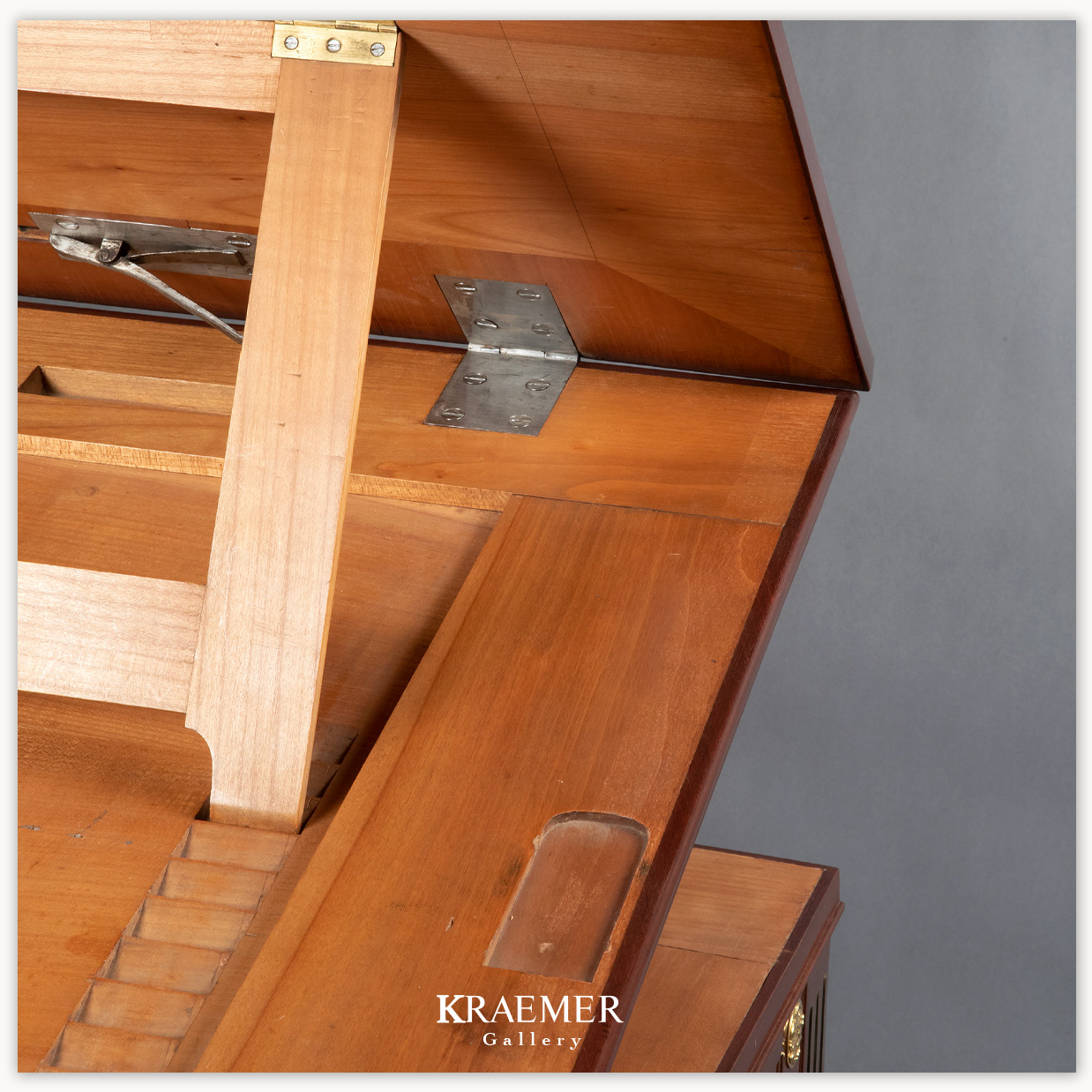SELECTION OF PIECES
À la tronchin architect table.
Late 18th century
By DAVID ROENTGEN (not signed)
Mahogany and mahogany veneering
Dimensions:
Height: 80.5 cm (lowest height) = 32 ¾ inches
Maximum height: 145 cm (highest height) = 57 inches
Width: 99.4 cm = 39 1/8 inches
Depth : 68.4 cm = 26 7/8 inches
Restored for use and maintenance purposes.
Similar works of art:
– À la tronchin table by David Roentgen, circa 1790-1800,
Paris, Nissim de Camondo Museum, inv. CAM56
– À la tronchin table by David Roentgen, circa 1780-1795,
New-York, The Metropolitan Museum
À la Tronchin tables by Roentgen:
This table comes in different models and forty copies of it were made.
The original design is featured in the “Journal des Luxus und der Moden”, published in Weimar in 1795. In 1786, David Roentgen delivered “nine tables to could be used while standing up and while sitting down” to the Empress Catherine II of Russia. One of them is still on display in the Pavlovsk Palace in Saint Petersburg.
Another table, which is very similar to this one, but whose size is slightly different is on display in the Nissim de Camondo Museum in Paris.
It can be compared to a similar table, which was displayed in the Château de Maulévrier at the end of the 18th century. It was featured in one of the portraits of the Comte de Colbert-Maulévrier and his family, which was shown in the booklet of the exhibition organised by the Metropolitan Museum in 2012. The Comte de Colbert-Maulévrier was an ambassador at the Electorate of Cologne. He probably bought this table from David Roentgen in Neuwied.
“A à la tronchin table”:
18th-century art enthusiasts were craving novelty. They started to develop a keen interest in furniture featuring hidden mechanisms and rack and pinion gearing relying on cranks.
“Tronchin tables”, also known as “à la Tronchin desks” were probably created by the Genovese doctor Théodore Tronchin (1709-1781) during Louis XVI’s reign.
At the time, he was doing research on bone diseases contracted by architects who spent too much time sitting at their desks – such diseases were caused by poor posture. He recommended using a reclining table, which could be adjusted depending on whether the person was standing up or sitting down; he hoped that such tables would help ease their back pain.
It is quite hard to tell who created Tronchin tables; they were already well-known at the time, though they were only used by wealthy people.
Théodore Tronchin made this long-forgotten table popular and improved it. He was quickly followed by cabinetmakers such as Louis Dufour, David Roentgen or Joseph Canabas.
DAVID ROENTGEN (1743-1807)
He lived in Germany, in Neuwied-sur-le-Rhin, near Coblence. He obtained the title “Private royal mechanic and cabinetmaker” after delivering furniture pieces intended for Versailles. He obtained his degree in 1780. However, in spite of the support he received, he was not allowed to work in Paris, and was only able to open a shop there. He continued to create furniture pieces in his manufactory located in Rhineland which soon became famous across Europe. He worked for the King of Prussia and for Prince Charles de Lorraine, who ruled the Austrian Netherlands. He opened shops in Paris, Berlin and Vienna.
His best customer was the Empress Catherine II of Russia, who bought numerous furniture pieces from him from 1783 onwards.
David Roentgen’s works of art are on display in the greatest museums across Europe, the United States and Russia.
> Download the complete form available in PDF format
Bibliography:
Alexandre Pradère, Les ébénistes français de Louis XIV à la Révolution, Paris, Éditions du Chêne, 1989
Guillaume Janneau, Le meuble léger en France, Paris, Éditions Paul Hartmann, 1952, p. 41
Guillaume Janneau, Les petits meubles, Paris, Éditions d’Art Charles Moreau, 1977, p. 20
Anne Droguet, Les styles Transition et Louis XVI, Paris, Éditions de l’Amateur, 2005, p. 138
Sylvie Legrand-Rossi, Le mobilier du musée Nissim de Camondo, Paris, Éditions Faton, 2012, p. 138
Jean-Jacques Gautier et Bertrand Rondot, Le château de Versailles raconte le Mobilier national,
Quatre siècles de création, Paris, Éditions Skira/Flammarion, 2011, pp. 208-209
Hans Huth, Roentgen furniture, Abraham and David Roentgen : European Cabinet-makers,
London and New York, Sotheby Parke Bernet, 1974, p. 148
Wolfram Koeppe, Extravagant inventions. The Princely furniture of the Roetgens, New York,

